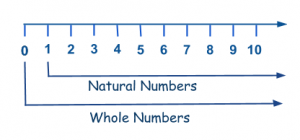Example Of Natural Numbers -
Natural Numbers Overview
What are Natural Numbers?
Natural numbers are a fundamental concept in mathematics that are used to count and measure quantities. They are the positive integers starting with 1, such as 1, 2, 3, 4, 5… and so on. The set of natural numbers does not include negative numbers or decimal fractions.
Properties of Natural Numbers
Natural numbers have several important properties that make them useful for calculations and problem-solving. Some of these properties include the following:
- They are closed under addition and multiplication
- They are well-ordered, meaning that every non-empty subset of natural numbers has a least element
- Every natural number has a unique predecessor and successor within the set
- They are commutative and associative under addition and multiplication
Natural Numbers Visualization
Natural Numbers on a Number Line
One way to visualize natural numbers is to plot them on a number line. A number line is a straight line with evenly spaced tick marks that represent different numbers. We can plot the natural numbers on a number line by starting at 1 and counting up by 1s.

Natural Numbers in the Real World
Natural numbers are used to count things in our everyday lives, such as the number of people in a room, the number of apples in a basket, or the number of pages in a book. They are also used in mathematical models to represent various physical phenomena, such as the number of molecules in a gas or the number of bacteria in a petri dish.

Applications of Natural Numbers
Natural Numbers in Combinatorics
Combinatorics is a branch of mathematics that deals with counting and arranging objects. Natural numbers are often used in combinatorics to represent the number of ways that objects can be arranged or selected. For example, if we have 5 different colored balls and we want to choose 3 of them, we can use natural numbers to represent the number of ways this can be done.
Natural Numbers in Number Theory
Number theory is a branch of mathematics that deals with the properties and relationships of numbers. Natural numbers are the building blocks of number theory, and many important theorems and concepts in number theory are based on natural numbers. For example, Euclid's famous theorem states that there are infinitely many prime numbers, which are a subset of the natural numbers.
Natural Numbers in Set Theory
Set theory is a branch of mathematics that deals with the properties and relationships of sets of objects. Natural numbers are often used in set theory to represent the size of sets or to label the elements of sets. For example, we can use natural numbers to represent the size of a set of objects or to label the elements in a set.
Tips and Ideas for Working with Natural Numbers
Here are some tips and ideas for working with natural numbers:
- Learn the basic properties and definitions of natural numbers, such as the fact that they are closed under addition and multiplication and that they are well-ordered.
- Practice visualizing natural numbers on a number line or in other visual representations.
- Study natural numbers in the context of other branches of mathematics, such as combinatorics, number theory, and set theory.
- Use natural numbers in real-world situations, such as counting objects or modeling physical phenomena.
- Experiment with different ways of representing natural numbers, such as in binary or hexadecimal notation.
How to Teach Natural Numbers
Teaching natural numbers can be a fun and interactive experience for students. Here are some tips for how to teach natural numbers:
- Start with concrete examples of natural numbers, such as counting objects in the classroom or at home.
- Use visual aids, such as number lines or pictures of objects, to help students understand the concept of natural numbers.
- Introduce students to the basic properties and definitions of natural numbers, such as the fact that they are closed under addition and that they are well-ordered.
- Teach students how to perform basic operations with natural numbers, such as addition, subtraction, multiplication, and division.
- Encourage students to experiment with natural numbers and to explore different ways of representing them, such as in other numerical systems like binary or hexadecimal.
View more articles about Example Of Natural Numbers


